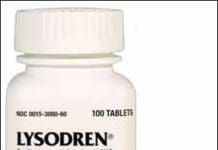Could a Raw Dog Food Diet Replace the Need to Brush?
Many raw dog food diet proponents claim that the nutrients and/or chemical composition of a raw diet keeps dogs from developing gingivitis or periodontitis. We’re not aware of any studies that have proven these claims, but the persistence of the anecdotal evidence of this phenomenon (to say nothing of its evolutionary success) suggest that there are dental benefits to a diet that includes raw, meaty bones.
How Prebiotics Improve Your Dog’s Digestion
Prebiotics (no, it's not a typo) nourish probiotics, the beneficial bacteria discussed last month that support your dog's digestive health, the immune system, and more. A prebiotic is de?ned as a nondigestible food ingredient that bene?cially affects the host by selectively stimulating the growth and/or activity of one or a limited number of bacteria in the colon and thus improves host health.""
Causes of Canine Conjunctivitis and Treatment Options
Something is wrong with your dog’s eye. It’s bright red or oozing pus or itching like crazy. Could it be pink eye? This common childhood condition, also known as red eye or conjunctivitis, affects people, cats, and our canine companions. Conjunctivitis is an inflammation of the conjunctiva, the tissue covering the eye and inner surface of the eyelid. If caused by bacteria or viruses, it can be infectious. Noninfectious conjunctivitis can be caused by allergic reactions, irritants, or trauma injuries.
The Benefits of Probiotics for Your Dog
All dogs can benefit from probiotics, which aid digestion and modulate the immune system. Probiotics are beneficial bacteria that live in the digestive tract. There are a variety of different species belonging to genera that include Lactobacillus, Bifidobacterium, Streptococcus, and Enterococcus (often abbreviated by first initial only in names). Some species, such as Lactobacillus, live primarily in the small intestine, while others, such as Bifidobactera, reside in the large intestine (colon).
Clarifying Diagnosis of Addison’s Disease; Excellent New Book
The October and November 2011 issues of Whole Dog Journal provided in-depth discussion of canine Addison’s and Cushing’s diseases. The following information should help clarify other questions that may arise about the diagnosis of canine adrenal disorders. The relationships between adrenal cortisol and sex steroid production is complicated. In chronic illnesses, the body’s adrenal glands can become exhausted or fatigued. The adrenal glands may then respond by increasing the output of cortisol, and the intermediate and sex steroids.
Addison’s Disease; Adding “Real” Foods; Canned Plants
Thank you so much for the recent article published about Addison’s disease in dogs. The day I read it my dog Hayleigh was showing almost every symptom, some she’s had on and off for years. The final clue was the frequent urination, which had started the day before. Because I read the article prior to taking her to the vet I knew to ask for the ACTH test in addition to the urine sample, which came back positive for primary Addison’s.
New Flea and Tick Products Hit the Market
Lately, it seems like new flea and tick control products have been popping up left and right. I suspect this is due to some of the original patents running out. When a patent expires, other companies can create generic versions of the same product, usually for less money. This inspires the original companies to create new products that they can patent anew. In some cases, new products are introduced because fleas and ticks may be developing resistance to the older products, lowering their efficacy. Most new products, including all those introduced this year, are just new combinations of older ingredients. Here’s a rundown on these new options.
Complementary Care for Dogs with Cushing’s Disease
Because the diagnosis and treatment of Cushing's disease can be confusing, expensive, and fraught with adverse side effects, many caregivers turn to alternative or complementary therapies. For those who prefer treatments that have been proven in double-blind, placebo-controlled clinical trials, unconventional therapies are themselves fraught with peril. Product testimonials and anecdotal reports don't prove anything, and by turning first to an herbal preparation or glandular extract, one might deny the patient an opportunity for effective treatment.
Diagnosing Atypical Cushing’s Disease in Dogs
What if your dog has all the symptoms of Cushing's excessive drinking, urination, and appetite; pot belly; skin problems; elevated alkaline phosphatase; etc. but the tests say no? Veterinary endocrinologists at the University of Tennessee in Knoxville (UTK) have been investigating this phenomenon. They found that many dogs have elevated steroid intermediates (also called steroid precursors or sex steroids") with normal cortisol. They call this condition "atypical Cushing's disease
Iatrogenic and Pseudo-Cushing’s in Dogs
A very small percentage of Cushing's cases result from medical treatments for other conditions, such as the use of prednisone or other corticosteroid medications to control allergies, arthritis, or autoimmune conditions. This is called iatrogenic" (doctor-caused) Cushing's. In these cases
Diagnosing Cushing’s Disease in Dogs
Sometimes life-threatening illnesses develop so slowly that no one pays much attention. An older dog who's always thirsty drinks huge quantities of water. He's hungrier than usual and has developed a thin coat and pot belly. He pants all the time, and now his hind legs are losing muscle tone and getting weak. Many owners dismiss these as normal signs of aging, but they are classic symptoms of Cushing's disease, which affects an estimated 100,000 dogs in the U.S. every year.
Chemotherapy for Dogs: What to Expect
Cancer. My heart dropped to my stomach. In February 2010 my Border Collie Daisy became one of an estimated six million dogs diagnosed with cancer each year. Chemotherapy. My stomach tumbled to my feet. The diagnosis was scary enough; how could I possibly consider chemotherapy? I had visions of a treatment worse than the disease itself. As it turns out, my preconceptions of chemotherapy were far worse than its reality. Chemo hasn't cured my dog more on that later but it's given us more than 18 months (and counting) of joyful, quality time together.
















